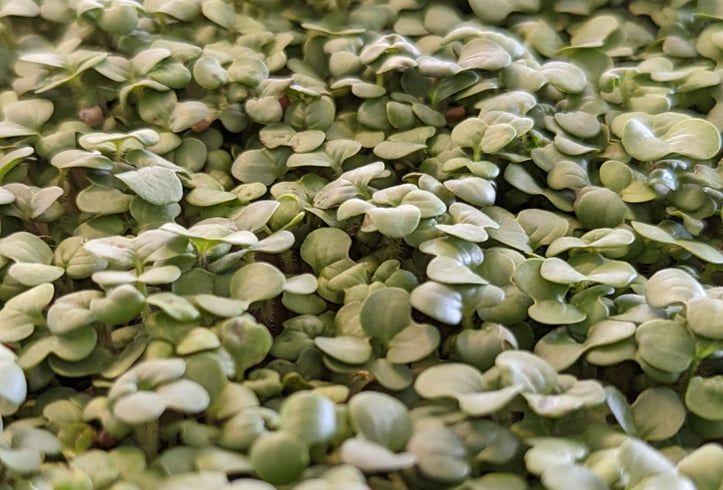Microgreens.
What are microgreens anyways? Why would I want to buy them?
Microgreens are the seedling version of a vegetable or herb. They are compact and filled with a ton of nutrients, texture and intense flavour. Microgreens take anywhere from 6-21 days to grow and can be grown indoors. It is working great for our farm, especially during the winter when we are stuck inside. Microgreens are used usually as a garnish to add flavour, look or texture to your meal. But personally, I like to add them to everything, just to get an added punch of flavour and the nutrients I lack in my diet (espcially in the wintertime). Even my toddler (who hates almost every vegetable) will eat the radish microgreens straight from the tray. A win for me!
So How Healthy are Microgreens?
Microgreens are packed with nutrients. The amount of nutrients will vary of course depending on variety, but most are rich in potassium, iron, zinc, magnesium and copper. Vitamins and antioxidant levels are up to 40 times higher than in the mature plant because of their compact size.
Healthline lays out all the benefits of Microgreens wonderfully:
“Microgreens may reduce the risk of the following diseases:
Heart disease: Microgreens are a rich source of polyphenols, a class of antioxidants linked to a lower risk of heart disease. Animal studies show that microgreens may lower triglyceride and “bad” LDL cholesterol levels.
Alzheimer’s disease: Antioxidant-rich foods, including those containing high amounts of polyphenols,may be linked to a lower risk of Alzheimer’s disease .
Diabetes: Antioxidants may help reduce the type of stress that can prevent sugar from properly entering cells. In lab studies, fenugreek microgreens appeared to enhance cellular sugar uptake by 25–44%.
Certain cancers: Antioxidant-rich fruits and vegetables, especially those rich in polyphenols, may lower the risk of various types of cancer. Polyphenol-rich microgreens may be expected to have similar effects.”

